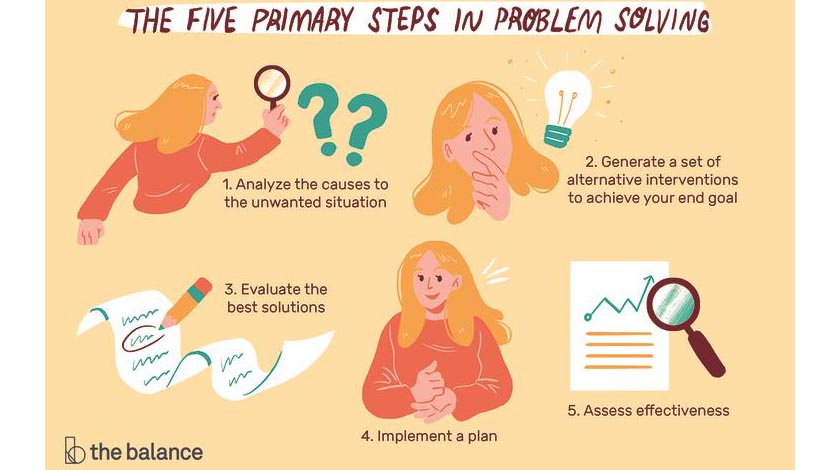More can be done to stop domestic violence

Roselyne Sachiti Features, Health & Society Editor
Women from Mashonaland East Province experience more spousal violence than any other females in Zimbabwe (55 percent), according to the latest Multiple Indicator Cluster Survey (MICS 2019) released last week.
In the MICS report, released by the Zimbabwe National Statistics Agency (ZIMSTAT), the top three provinces where women reported having experienced all forms of spousal violence include Mashonaland East (55 percent), followed by Masvingo (54 percent) and Manicaland (53 percent).
Mashonaland Central Province has recorded a decline (51 percent). In the 2014 MICS, Mashonaland Central recorded 60,5 percent, the highest in the country.
“Physical violence was high amongst women with primary education (41 percent) and those in the poorest quantile (41 percent),” the 2019 report states.
About two in five women reported having experienced either physical or sexual violence whilst one in 10 reported having experienced both.
Among the married persons, physical violence is more likely to be committed by the husband/partner (72 percent) with 22 percent a former husband or partner doing the same.
The report also states that countrywide, 12 percent of women reported having experienced sexual violence, while five percent reported having experienced it in the last 12 months.
Provinces that reported the lowest prevalence of spousal sexual violence were Matabeleland North which had five percent, Matabeleland South with six percent and Bulawayo with seven percent.
Countrywide, 39 percent of women aged 15-49 years reported that they had experienced physical violence since the age of 15 while 11 percent experienced the violence in the last 12 months.
“Slightly above six in 10 cases of violence experienced by married persons were committed by current husband or partner,” MICS further states.
Nationally, 34 percent of women experienced emotional violence, 37 percent physical violence, sexual violence 10 percent, physical or sexual violence 40 percent and emotional or physical or sexual violence 49 percent.
Marital control, which results in attempts by husbands or partners to closely control or monitor their wives’ behaviour, were described as early warning signs and correlate with violence in a relationship.
Questionnaires carried questions such as;
- Is he jealous or angry if she talks to other men?
- He frequently accuses her of infidelity?
- He does not permit her to meet female friends?
- He tries to limit her contact with friends?
- He tries to limit her contact with her family?
- He insists on knowing where she is at all times?
Following episodes of violence, 37,7 percent women sought to stop violence; 27 percent never sought help, but told someone; 35,2 percent never sought help and never told anyone.
The latest findings go to show how gender-based violence is still a thorn in the flesh of many Zimbabwean women.
The health implications of GBV are overwhelming. It has been estimated that at least one in every three women around the world has been beaten, coerced into sex, or otherwise abused in her lifetime.
Violence is also a more serious cause of death and incapacity among women of reproductive age than cancer, and greater cause of ill-health than traffic accidents and malaria combined. To curb gender-based violence, Zimbabwe has done quite a lot in terms of legislation and policies.
Laws and Policies
The Domestic Violence Act (Chapter 5:16) makes provision for the protection and relief of victims of domestic violence.
Under the Act, domestic violence is defined widely.
A paper by Pamela Machakanja, Deliah Jeranyama and Eunice Bere titled; “The Constitutional and Legal Frameworks for the Protection of Women against Violence in Zimbabwe” published by the Zimbabwe Legal Information Institute (ZLII) confirms this.
It touches on abuse derived from any cultural or customary rites or practices that discriminate against or degrade women, such as forced virginity testing, female genital mutilation, pledging of women and girls for purposes of appeasing spirits, abduction, child marriages, forced marriages, forced wife inheritance and other such practices, says Machakanja et al.
CEDAW
Zimbabwe is a signatory to the international human rights frameworks for women’s rights. Zimbabwe ratified the Convention on the Elimination of All Forms of Discrimination against Women (CEDAW) in 1991 which is considered as the women’s bill of rights.
“Under this convention, states have the obligation to review their legal systems in order to end discrimination and to establish institutions that protect women. As part of the obligations, CEDAW allows for the monitoring of compliance and receives complaints from the signatory states,” they state.
However, according to Machakanja’s paper, Zimbabwe is not yet a party to CEDAW’s Optional Protocol of 2000 which allows the CEDAW Committee to receive and consider complaints from individuals or groups from member states.
Beijing Declaration and SADC Protocol
Zimbabwe is also a signatory to the Beijing Declaration of 1995, the Protocol to the African Charter on Women’s Rights of 2003 and the SADC Protocol on Gender and Development of 2008.
The SADC Protocol aims to provide for the empowerment of women to eliminate discrimination and achieve gender equality by encouraging and harmonising the development and implementation of gender responsive legislation, policies and programmes and projects.
Since 1980, apart from entrenching gender rights as constitutional rights, the Government and the courts adopted various criminal law measures to protect and advance the rights of women and protect them against discrimination and gender-based violence.
Victim Friendly Unit
In Zimbabwe, the Victim Friendly Unit was established in 1996 primarily to proactively and reactively police crimes of a sexual nature committed against women and children in a manner sensitive to the victim. The unit aims to be supportive of victims and to make the environment conducive, private and friendly.
Zimbabwe Gender Commission Act of (Chapter 10:31) paved way for the establishment of the Zimbabwe Gender Commission to perform specified functions, including the investigation of and making of recommendations on the removal of barriers to the attainment of full gender equality and to provide for matters connected with or incidental to the foregoing.
The specific mandate of the commission is derived from Section 246 of the Constitution. The provisions are listed as follows:
to monitor issues concerning gender equality and to ensure gender equality as provided for in the Constitution;
to investigate possible violations of rights relating to gender equality;
to receive and consider complaints from the public and to take such action in regard to the complaints as it considers appropriate;
to conduct research into issues relating to gender and social justice and to recommend changes to laws and practices which lead to discrimination based on gender;
to advise public and private institutions on steps to be taken to ensure gender equality;
to recommend affirmative action programmes to achieve gender equality;
to recommend prosecution for criminal violations of rights relating to gender;
to secure appropriate redress where rights relating to gender have been violated; and
to do everything necessary to promote gender equality.
In 2019, the Spotlight Initiative, a global UN joint programme supported by the European Union to tackle gender-based violence was launched in Zimbabwe on June 26.
The initiative, a four-year joint programme (2019-2022) aimed at changing the manner of doing business to effectively transform the situations and vulnerabilities of women and girls in Zimbabwe has six inter-connected and mutually reinforcing pillars, aimed at holistically addressing violence against women and girls on: laws and policies; institutions strengthening; prevention and social norms; services; data; and women’s rights movement.
The programme focus on prevention, protection of survivors, participation of communities and the provision of services to survivors, as well as increased reporting of cases of violence against women and girls.
Furthermore, the Government already has in place mechanisms and multi-sectoral structures, starting from the national level down to the ward level that address GBV.
The country is also in the process of reviewing many laws to align them to the 2013 Constitution, which include the labour laws and introducing legislation aimed at ending child and forced marriages.
GBV is not unique to Zimbabwe as other countries in the SADC region face the same problem.
SADC countries, Swaziland, Botswana, Lesotho and South Africa are among nations with the highest cases of rape in the world, according to a report by an American online forum known as ABC Newspoint.
According to the report, South Africa has the highest numbers of rape cases, with about 40 percent of the females being raped in their whole life.
According to ABC Newspoint, approximately one of nine rapes are reported. Hence, the actual number of rape cases is much higher than expected.
With about 132,4 rape cases per 100 000 inhabitants, crime in South Africa involves women, men, and children.
Four percent of men are sexually assaulted, 41 percent are children with 15 percent of them under the age of 11.
Upsetting is that 50 percent of South Africa’s children are being abused before they reach 18.
According to the report, South Africa is followed by Botswana, Lesotho and Swaziland.
“Crime rates, including violent and non-violent crimes, increased in Swaziland in the past few years and the most reported cases are residential burglary and non-residential petit theft,” the report added.
The other three countries are said to have between 87,2 and 132,4 rape cases per 100 000 citizens.
The results in Zimbabwe’s latest MICS 2019 are a wakeup call that even with all the interventions that have been put in place, more still needs to be done.










Comments